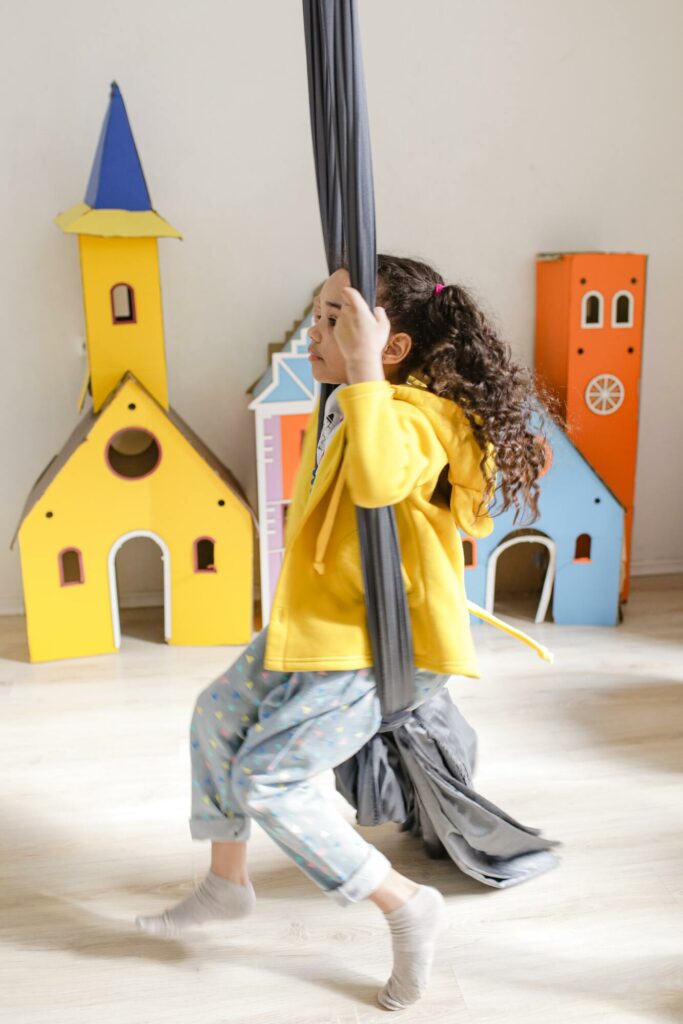Children on the autism spectrum may have some unique sensory needs that require some adaptations not present in a typical home. Whether you live with a child with sensory needs, or have someone visiting, there are some key ways you can adjust your home environment to make it more sensory friendly.
There are many different types of stimuli, so we’ve categorized our tips for ease of use. Keep in mind, everyone is different, so while one person may find one thing overwhelming, another may find it not stimulating enough. Observe your child and use trial and error to determine which tips work for your family
Visual Needs
- Hang blackout curtains to block light while sleeping.
- Cover any small lights on electronics such as a clock or power light.
- Install a dimmer switch on lights to create a calmer space without having to go completely dark.
- Avoid flashing lights.
- Adjust brightness on screens large and small (e.g. tablet, TV, etc.).
- Be mindful of the colors you use in a room for decorating.
- Bright colors such as red and yellow can be stimulating
- Cool colors such as blue and green can be calming
Auditory Needs
- Avoid loud sounds (e.g. vacuum, blender).
- Keep any loud pets calm to prevent startlingly loud sounds.
- Play a white noise machine if there are a lot of distracting sounds, particularly at bedtime.
- (TIP: there are many white noise apps available on smart devices such as smartphones, tablets, Google home, or Amazon alexa)
- Be mindful of any alarms you have set throughout the day and if they may pose a problem, quiet them.
- Be mindful of the audio from any entertainment you may be playing.
- A movie with loud, roaring dinosaurs may be overwhelming.
- Rock music can be stimulating.
- Classical music can be calming.
- Provide headphones to block out noise, whether with audio of their choice or simply to block out the ambient sounds.
- Blackout curtains can also help with loud sounds outside.
Tactile Needs
- Fidgets come in all shapes and sizes, from the more popular stress balls and fidget spinners to DIY sensory bottles and DIY putty, to pop its and fidget cubes.
- Keep appealing objects out of reach (e.g. if your child likes ripping paper, keep any important documents out of reach).
- Shoes may need to be on/off.
- Certain fabrics could be stimulating (positively or negatively) which can impact clothing choices, blanket preferences, furniture preferences, etc.
Vestibular Needs
- Offer a weighted blanket/vest.
- Provide space to run and move/climb (e.g. a long hallway, a jungle gym, a couch pillow obstacle course, etc.).
- Create a small enclosed space/cozy corner for self-regulation.
Olfactory Needs
- Avoid strong scents if you use any air freshener, laundry scent boosters, or strong smelling cleaners.
- Avoid cooking foods with strong smells such as garlic and durian.
- Clean the house of animal scents as often as possible.
Oral Needs
- Picky eaters don’t just go by tastes, but textures as well. Be conscious as you make meal choices to include foods you are sure they eat.
- Depending on the age, gum, a chewy/teether, or chewelry (chewy jewelry) can provide oral stimulation to aid with self-soothing and focus.
If you’re unsure about someone’s needs, ask either the child in question and/or their caregiver(s). They may be able to tell you their preferences ahead of time so that you can be properly prepared.
If you are not able to ask, just be prepared to make adjustments. Everyone has different needs, and that’s okay! Whether it’s a classmate coming over after school for a playdate, or a cousin spending a week at your house, you are doing a kindness by going the extra mile to make your guest(s) feel comfortable and welcome.

